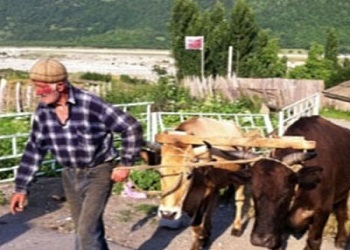- Details
The “Land-Poor-Farmers Assistance Spring Project” started in 2013. The project’s goal is to support rural residents in establishing sustainable farms.
The objective of the assistance program is the promotion of agro-technical activities (plowing) for cultivating annual crops and supplying the industrial inputs (fertilizers and/or seeds and/or plant protection products); and the promotion of the activities of those land-poor-farmers who only have perennial crops on their lands (the provision of fertilizers and/or plant protection products). This project gives farmers an opportunity to cultivate crops on lands that have not been plowed for years.
- Details
Family Farming is the predominant form of agriculture. It represents the main source of income in rural areas and produces majority of agricultural products in Georgia.
Family Farms produce the food that feeds billions of people. According to Food and Agriculture Organization (FAO), in many developing countries Family Farms represent up to 80 percent of all farm holdings. Local and global food security depends on them. Both in developing and developed countries, Family Farming is the predominant form of agriculture. Family Farming represents the main source of income in rural areas and produces majority of agricultural products in Georgia.
- Details
Georgia is a net importer of agricultural products (including primary commodities and processed food products), having run a net agricultural trade deficit in each of the last 10 years. However, many analyses have shown that Georgia has a comparative advantage in agricultural production. This suggests there is a large potential for expanding agricultural exports from Georgia.
The current structure of Georgia’s agricultural exports is highly concentrated:
• Between 2009 and 2014, four product categories (nuts; alcohol, spirits and liqueurs; wine; mineral waters) accounted for 75% of all agricultural exports from Georgia;













